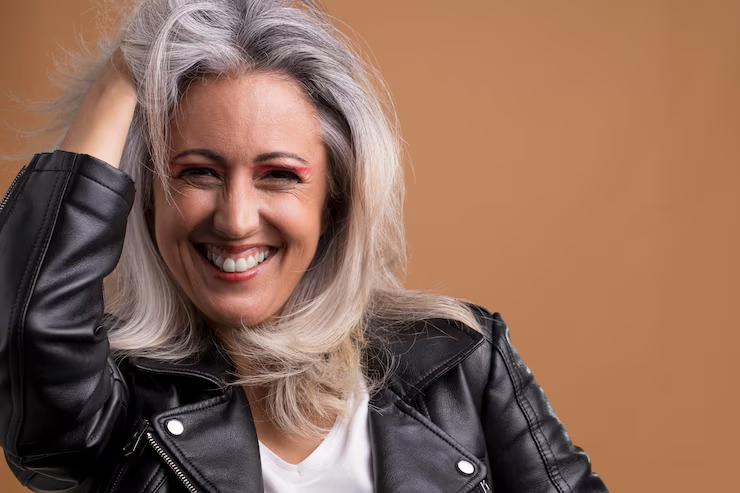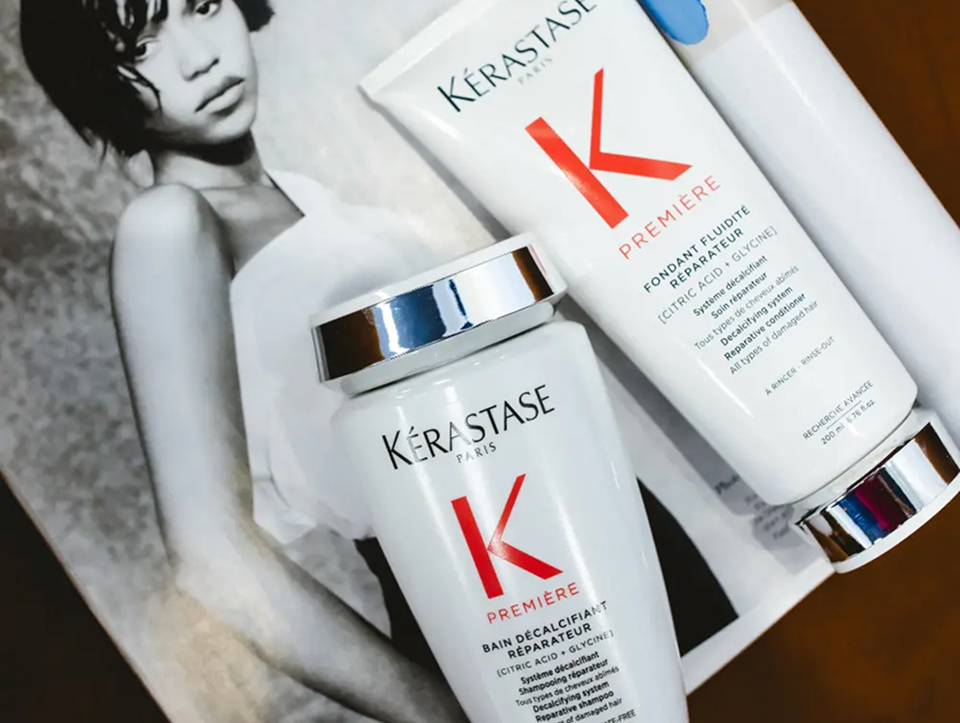Why are more women embracing gray? Well, gray hair isn’t just a sign of aging; it’s becoming a bold, liberating style statement. From influencers to CEOs, more women are transitioning to gray hair and ditching the dye.
But transitioning from colored hair to gray isn’t always easy. It takes patience, the proper care, and some solid styling strategies to avoid a dull or patchy grow-out phase. The struggle is the awkward grow-out phase, and you may feel like giving up halfway.
We’ve been there and have helped hundreds of clients in Boston and beyond embrace their gray with confidence. We understand that this isn’t just a hair change, it’s a lifestyle and identity shift.
The good news? With modern tools, techniques, and a supportive stylist, the transition doesn’t have to be stressful.
Let’s build your gray hair game plan with our expert advice, trending transition methods, maintenance musts, and support tips to help you rock your natural silver.
Understanding What “Going Gray” Really Means

Gray hair isn’t just a color change—it’s a shift in texture, porosity, and routine. As melanin decreases, hair can become:
- Coarser, drier, or more wiry
- More porous (absorbs and loses moisture quickly)
- More prone to yellowing from heat, minerals, UV, and pollution
Knowing this from the beginning helps you choose the right transition plan and care routine.
Choose the Best Transition Method for Your Lifestyle
There’s no one-size-fits-all path to going gray. Here are four main strategies, each with its pros and cons:
| Method | Timeframe | Maintenance | Best For |
|---|---|---|---|
| Cold Turkey / Big Chop | 3–6 months | Minimal | Bold personalities ready for a short haircut |
| Blending with Highlights/Lowlights | 6–12+ months | Trim every 8–10 weeks | Gradual shift with less demarcation |
| Root Smudge & Glossing | Continuous | Toning gloss every 6–8 weeks | Smooth blend with minimal contrast |
| Bleach + Tone | 1–2 sessions | High-risk | Those wanting an immediate silver look |
Want expert help deciding? Our professional stylists can guide your journey with a custom consultation.
At-Home vs Salon Transition — What’s Realistic?
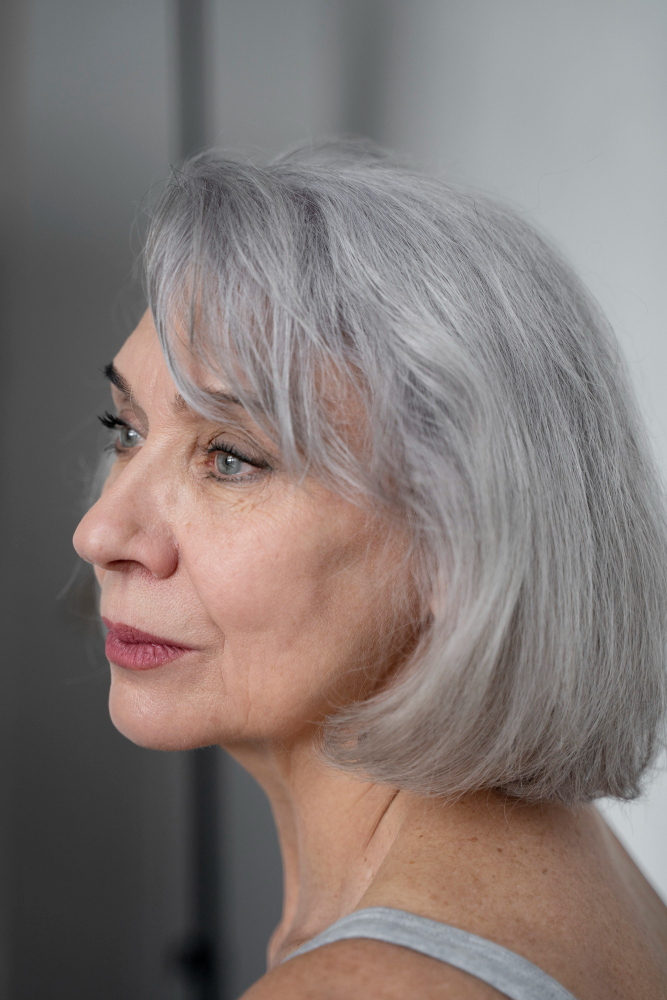
Salon Transition (Safest & Most Natural):
✔ Expert gray matching
✔ Damage-controlled lightning
✔ Customized blending
✔ Professional glossing
✔ Predictable timelines
At-Home Transition (Needs Caution):
You can do basic maintenance, but complex color changes should stay in professional hands.
At home, you can:
- Use purple shampoo
- Style for blending
- Apply temporary root sprays
- Use moisturizing masks
- Keep a healthy routine
But you should not:
- Bleach your own hair
- Attempt lowlights on your own
- Use strong toners without guidance
Color Correction Techniques That Make a Huge Difference
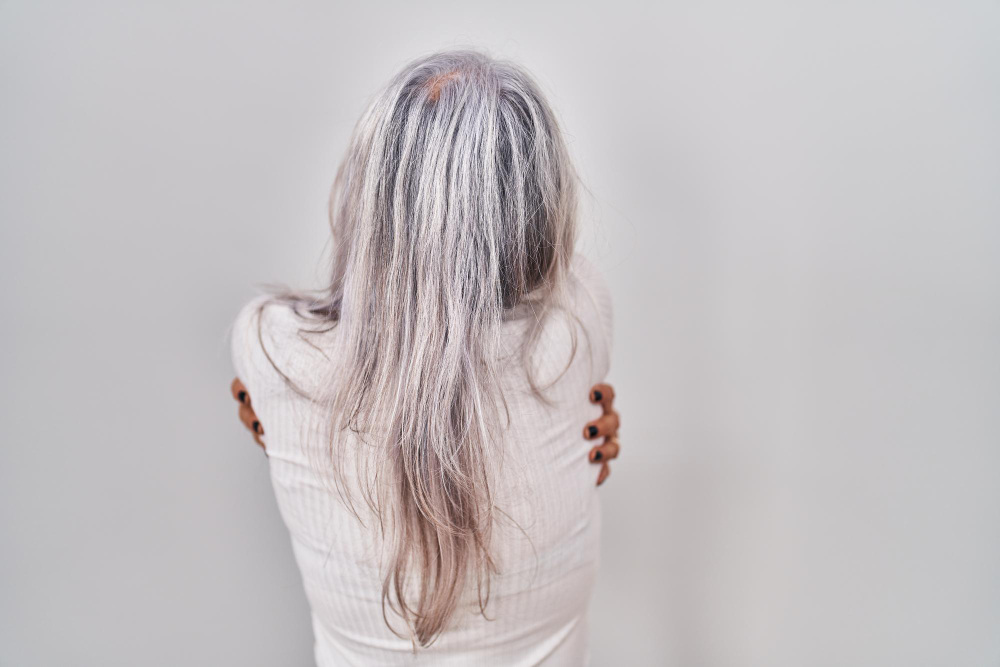
When transitioning to gray hair, don’t just grow it out; blend it out. Techniques such as:
- Root smudging to soften the line between dyed and gray hair
- Balayage lowlights to break up heavy contrast
- Glazing or gloss treatments to enhance shine and cool unwanted brassiness
- Anti-Brass Neutralizing prevents gray from looking “dusty,” “yellow,” or “warm.”
We recommend regular scalp therapy treatments to keep your scalp healthy during the grow-out period.
How Long Does It Take to Transition to Gray?

The timeline depends on the method:
- Big chop: 3–6 months
- Gray blending: 6–18 months
- Root smudge + gloss: ongoing
- Natural grow-out: 1–3 years, depending on length
Month-by-Month Gray Transition Expectations
Month 1–3:
Early regrowth appears; demarcation begins.
Start gloss treatments.
Month 4–6:
Contrast increases.
Add highlights or lowlights for blending.
Month 6–12:
The majority of blending is complete.
Root color looks unified.
Month 12–18+:
The ends of dyed hair are nearly grown out.
You’re fully transitioned or close to it.
Texture Changes & How to Care for Gray Hair
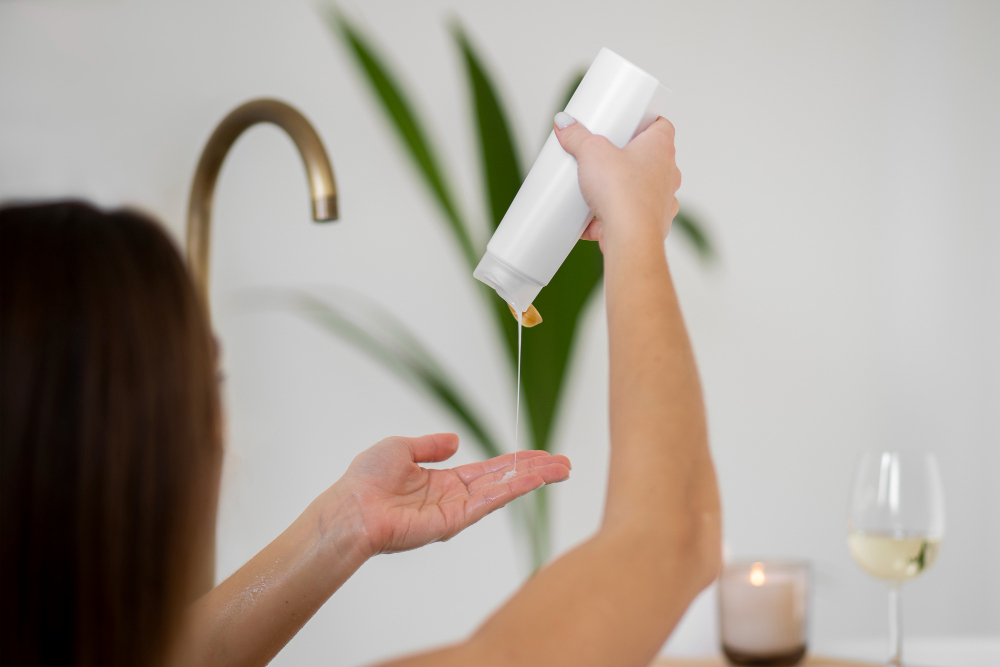
Gray hair often has a different texture from pigmented hair, coarser, drier, and more porous. Here’s how to nourish it:
- Purple shampoo: Neutralizes yellow tones. Look for sulfate-free options used weekly.
- Deep conditioning masks: Use a hydrating mask like our deep conditioning treatment once a week.
- Limit heat styling: Use low heat and always apply a heat protectant (Kerastase styling products).
- Clarifying detox: Use a hair detox treatment monthly to remove buildup and keep grays bright.
According to a study published in the Journal of Cosmetic Dermatology, gray hair lacks melanin, making it more vulnerable to oxidative damage and UV exposure. So sunscreen sprays and hats are also helpful.
Recommended Products for Gray & Transitioning Hair
For frizzy gray hair:
- Smoothing serums
- Leave-in conditioners
- Moisture masks
For yellowing:
- Sulfate-free purple shampoo
- Glossing treatments
- Detox shampoos
For coarse texture:
- Rich oil blends
- Curl creams (even if wavy, not curly)
Transitioning from Different Starting Colors

Brunettes:
- Most challenging transition due to high contrast.
- Requires strategic highlights and smudging.
Redheads: Often need custom gray blending since natural grays can be bright white against copper.
Blondes: Most effortless transition; a few cool-toned foils may be enough.
Very Dark / Black Dyed Hair: Requires patience or a big chop. Avoid over-lightening.
Vogue calls this movement a “silver revolution,” and psychologists suggest embracing authenticity boosts long-term self-confidence. Furthermore, you can always visit us to help conceal your gray hair with highlights that blend with your grays.
Going Gray Gracefully: Tips for Confidence

- Follow inspiring silver influencers (@grombre, @silver.styling)
- Take monthly progress pictures
- Wear colors that complement gray (navy, black, jewel tones)
- Update your haircut as the transition continues
- Surround yourself with supportive voices
Common Mistakes to Avoid When Transitioning to Gray Hair
Avoid these pitfalls:
- Bleaching all your hair at once (risk of breakage)
- Skipping trims—split ends will ruin your look
- Using blue shampoo (too dark for most grays—stick to purple)
- Assuming one product fits all, gray hair varies widely
- Not consulting a stylist—DIY isn’t always your friend
Hairstyles That Look Amazing During a Gray Transition

Transitioning to gray hair is a great time to explore:
- A bold pixie or sleek bob
- Texture-enhancing styles that show off your silver strands
- Layered cuts that remove dyed ends faster
Our precision haircut experts can design a look that flatters your silver.
Temporary Ways to Hide Gray If Needed
For events or early stages:
- Root concealer sprays
- Colored powders
- Semi-permanent tints
- Light glossing
- Creative parting or styling
Learn more from our conceal gray hair tips for transitioning to gray hair.
Book Your Custom Gray Hair Transition Plan
Transitioning to gray hair is a personal, powerful choice, and you don’t have to do it alone. At Haste Hair, our Boston stylists specialize in graceful, modern gray transformations using science-backed methods and artistic skill.
🎯 Ready to own your silver? Book a consultation now. But if you’re not yet ready to go gray, come and discuss how we can help you with an all-over color instead.
FAQ
Will my hair texture change?
Yes, gray hair can feel drier or coarser. Hydration and deep conditioning help soften it.
How long does it take to go entirely gray?
Depends on your method. Cold turkey (big chop) can take 3–6 months, while slow blending may take over a year.
Can I dye it again if I regret going gray?
Absolutely. Just wait 6–8 weeks between significant color changes.
What’s the best way to tone gray hair naturally?
Use purple shampoo, glossing treatments, and avoid heat or sun exposure without protection.
Does gray hair mean unhealthy hair?
Not at all. With the proper care, gray hair can be shiny, soft, and strong.

